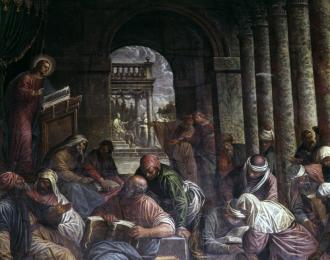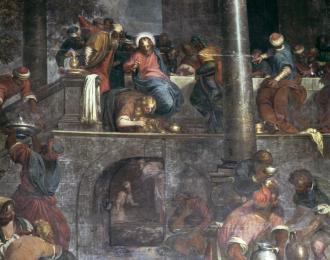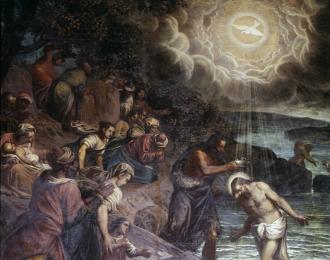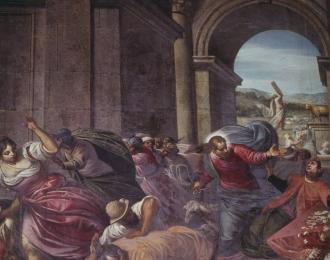Christology canvases
San Pietro Museum Complex
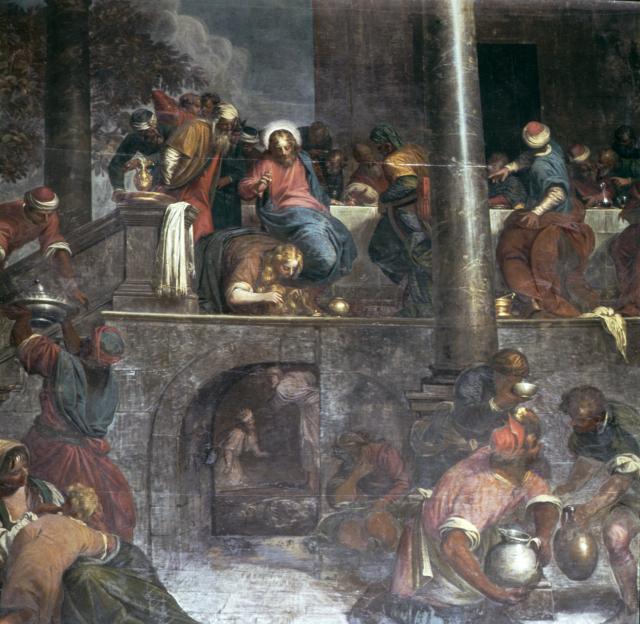
Antonio Vassilacchi known as l’Aliense
oil on canvas
1593-1594
Once the monumental canvas on the opposing wall depicting the Genealogy of the Benedictine Order was finished, Antonio Vassilacchi again committed himself to work for the monks at San Pietro, to create ten more large canvasses to be placed along the central nave. He promised to deliver five canvasses, complete in every detail, by Easter 1594. He agreed to bring the rough sketches of the remaining five paintings to Perugia at that same time. The first five were delivered on April 15th 1594; the others were finished in locowith the help of an assistant, who may have been Tomaso Dolobella of Belluno. The painter l’Aliense chose to represent an episode from the life of Jesus in the forefront of each painting and, in the background, a scene drawn from the Old Testament. This iconography was widespread, and used, for example, by Tintoretto in the Scuola di San Rocco in Venice.
The structure of the work effectively emphasizes how the earthly experience of Christ is the fulfillment of the prophecies and the Word of the Old Testament. Starting from the right wall of the entrance, the paintings are presented in the following order: The Nativity and Isaac blessing Jacob; The Disputation and the Queen of Saba admiring Solomon’s Wisdom; The Baptism of Christ and Naaman cured of Leprosy; The Wedding Feast at Cana and Abraham offering food to the Three Angels, (or Abraham at the Oak of Mamre); Jesus in the house of the Pharisee and Nathan reproaching King David for his sin; The raising of Lazarus and Elias raising the daughter of the widow Sereptha; The Cleansing of the Temple and Moses breaking the Tablets of the Law; Jesus’ Entrance in Jerusalem and David’s victory over Goliath; The Crucifixion and the Sacrifice of Isaac; The Resurrection and Jonah saved from the Whale.
In the wake of the Tridentine prescriptions during the second half of the 16th century, great pictorial cycles centered on the Life of Christ became common. As an example, consider the cycle in Orvieto created by Cesare Nebbia and Girolamo Muziano. L’Aliense’s undertaking brought contemporary artistic language to Perugia, hinged as it was on late Venetian Mannerism. The influence of Veronese and Tintoretto is found in the Disputation scene in the choices of color, in the setting, and in the portrayal of the figures in the foreground.
